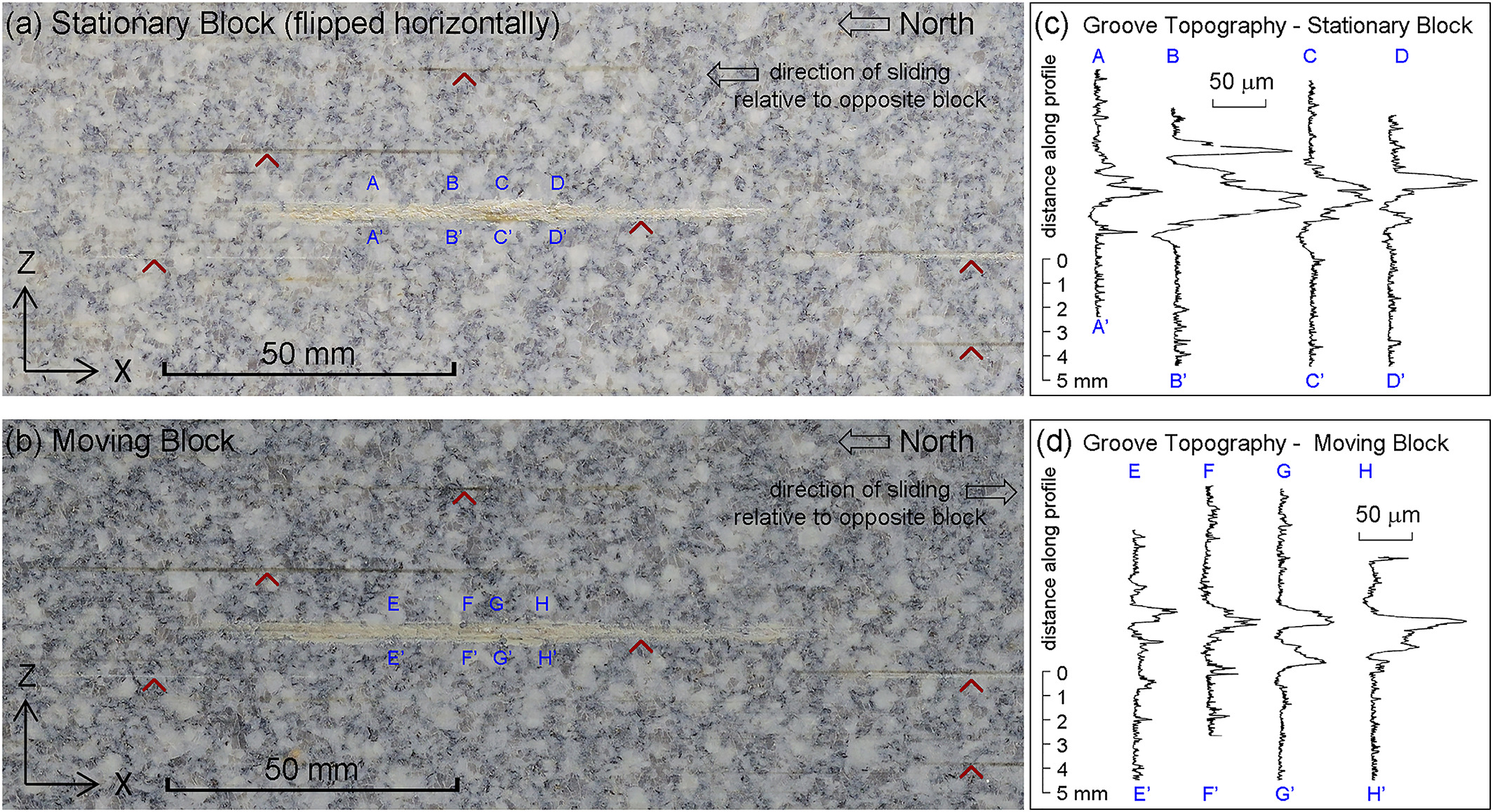Publication: Groove Generation and Coalescence on a Large-Scale Laboratory Fault
Authors: Emily E. Brodsky, Gregory C. McLaskey, Chun-Yu Ke
Faults are the products of wear processes acting at a range of scales from nanometers to kilometers. Grooves produced by wear are a first-order observable feature of preserved surfaces. However, their interpretation is limited by the complex geological histories of natural faults. Here we explore wear processes on faults by forensically examining a large-scale controlled, laboratory fault which has a maximum offset between the sides of 42 mm and has been reset multiple times for a cumulative slip of approximately 140 mm. We find that on both sides of the fault scratches are formed with lengths that are longer than the maximum offset but less than the cumulative slip. The grooves are explained as a result of interaction with detached gouge rather than as toolmarks produced by an intact protrusion on one side of the fault. The density of grooves increases with normal stress. The experiment has a range of stress of 1–20 MPa and shows a density of 10 grooves/m/MPa in this range. This value is consistent with recent inferences of stress-dependent earthquake fracture energy of 0.2 J/m2/MPa. At normal stresses above 20 MPa, the grooves are likely to coalesce into a corrugated surface that more closely resembles mature faults. Groove density therefore appears to be an attractive target for field studies aiming to determine the distribution of normal stress on faults. At low stresses the groove spacing can be measured and contrasted with areas where high stresses produce a corrugated surface.

Brodsky, E. E., McLaskey, G. C. & Ke, C.-Y. (2020) Groove Generation and Coalescence on a Large-Scale Laboratory Fault. AGU Advances, 1(4), e2020AV000184. doi: 10.1029/2020AV000184